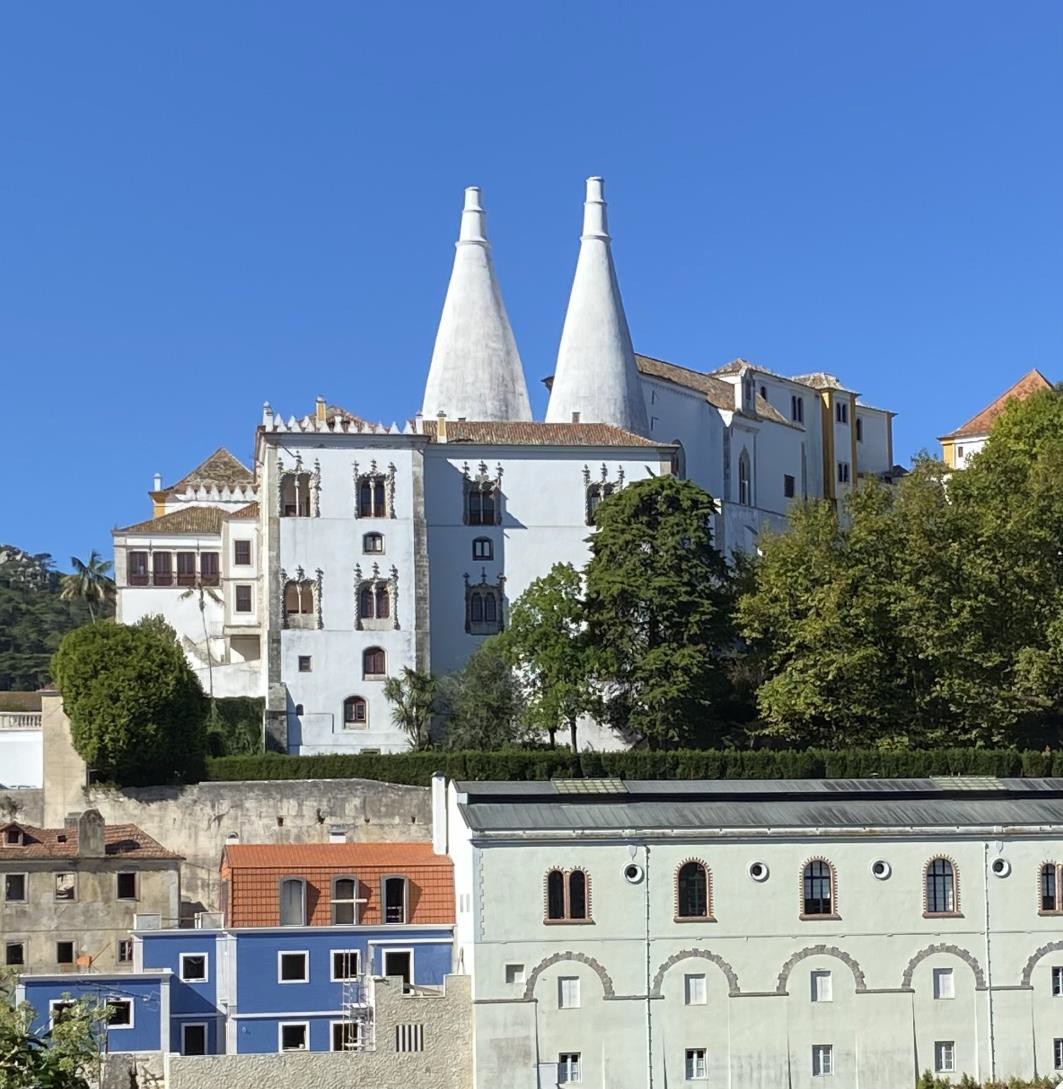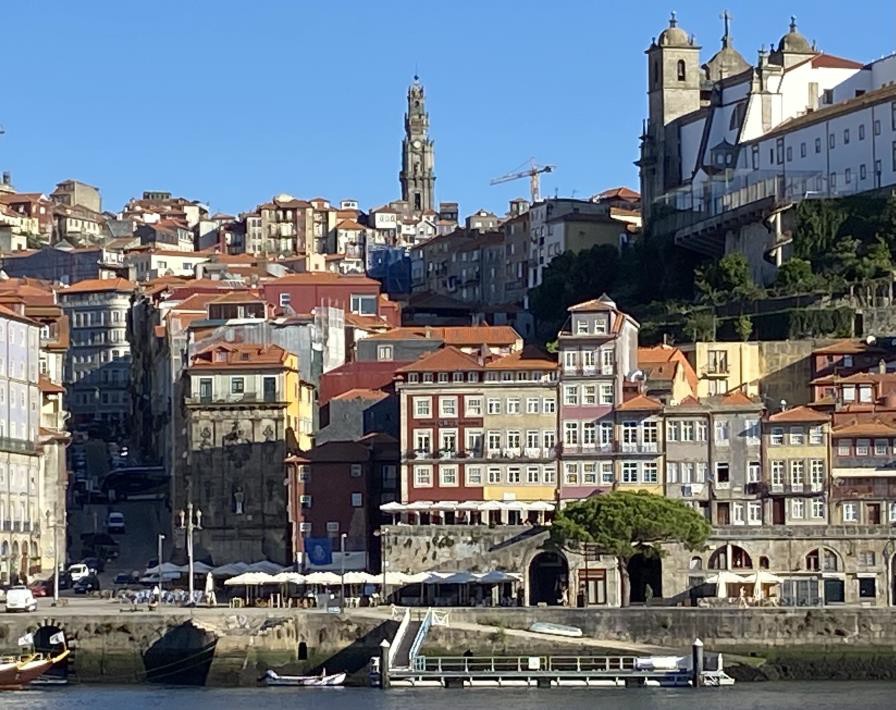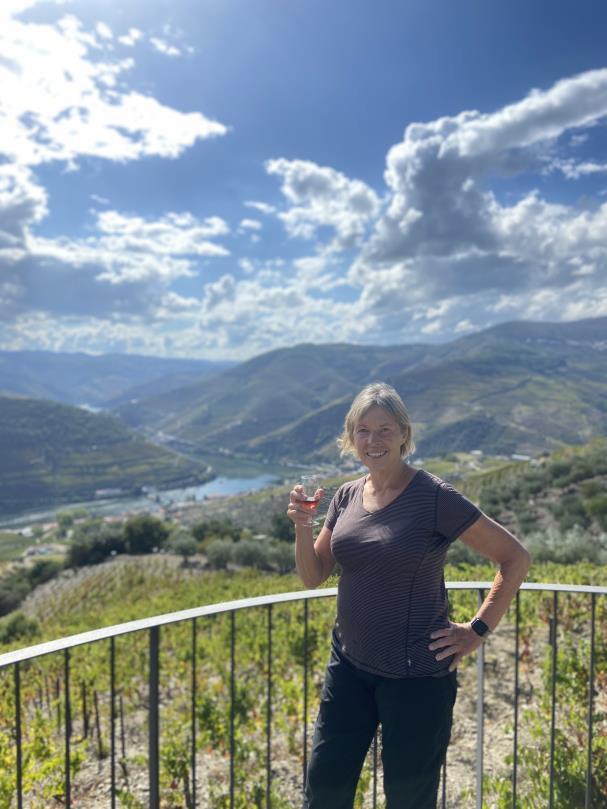The organized tour ended on Saturday. So, I had to rely on my own skills to further explore the country. It was periodically frustrating, time consuming but also a bit of fun.
Sintra is a short train ride from Lisbon. The round-trip fare is less than 5 euros and its only 40 minutes outside of the Lisbon Rossio Station.


Sintra was the “Hamptons of Portugal” before the United States was a country.
There are beautiful and whimsical palaces with exotic gardens. The area is also steeped in legends. Symbols of the Free Masons can be found in many churches and palaces.
The iconic image of Sintra is the National Palace. It has several architectural styles as the first building was constructed by
the Moors in the 11th century. The palace was expanded and remodeled. Eventually, two gigantic 33 meter conical chimneys were added to the royal kitchen in the 1300’s.
I only spent the day in Sintra and toured one of the more pedestrian palaces. Next time, I’ll schedule three days to explore the area.
Now it was time to head north and visit the financial capital of Portugal, Porto. It’s a three-hour train ride from Lisbon.

The citizens of Porto are independent and quite proud. Mostly, they’re proud not to be citizens of Lisbon! The two cities are very different.
Porto was unaffected by the 1775 earthquake, so the town has a medieval feel.




It was easy to get lost in Lisbon while wandering through the neighborhoods and up and down the hills. Porto has visible landmarks. Though there’s very little level ground, I could always find my way.
Despite beautiful weather, I toured the Clerigos Church and tower. The baroque church was completed in 1752. One of its historical claims to fame occurred during the Napoleonic Wars.
In 1809, a sentry spotted the French fleet while it was still 22 miles up the coast. 40,000 residents were able to flee the city before the French arrived
The war did not go well for the Portuguese. However, since King John VI had fled to Brazil and effectively moved the Portuguese capitol, the country was never officially conquered. Quite a loophole.
The picture below shows the sanctuary of Dos Clerigos

This shows a view of the Dos Clerigos tower from the other side of the Douro River.

I continued enjoying my daily morning snack of espresso and a pastel de nata. Joana, a fifth generation Porto resident, showed me how to make the delicious little treats. She hosted a workshop at her home where I learned the secrets of the recipe.


My souvenirs from Porto included one dozen pastry tins and 2 kilos of flour. The flour in Portugal seemed to blend better than my American mix. So I’m doing a flour comparison this month.
A trip to Portugal wouldn’t be complete without Port tasting and wine stomping. I was able to do both.
Wine stomping is fun when you’re a tourist. But it’s hard work if you’re employed for the task. The perfect “stomper” weighs about 80 kg. A stomping shift is three hours and grapes
are stomped in the morning and again in the evening. As tourists, we stomped for 15 minutes
after a meal of tapas and wine
The grapes are stomped in the Lagare, the rectangular cement vat, for four days. Then, the vat is emptied, cleaned and refilled with a fresh batch of grapes.


I was quite lucky to be in Porto during the harvest.
All trips must end. The next day, I was back on the train to Lisbon where I’d start my homeward voyage.